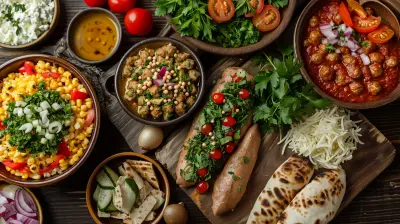Embarking on a Culinary Tour of Peru’s Sacred Valley
8 October 2025
Peru’s Sacred Valley is more than just breathtaking landscapes and ancient ruins—it's a food lover's paradise. Nestled between Cusco and Machu Picchu, this fertile valley has a deep-rooted culinary tradition shaped by the Incas and enriched by centuries of cultural fusion. If you love food and adventure, a culinary tour of the Sacred Valley will introduce you to vibrant flavors, farm-to-table traditions, and unforgettable gastronomic experiences. Ready to dive in? Let’s go!
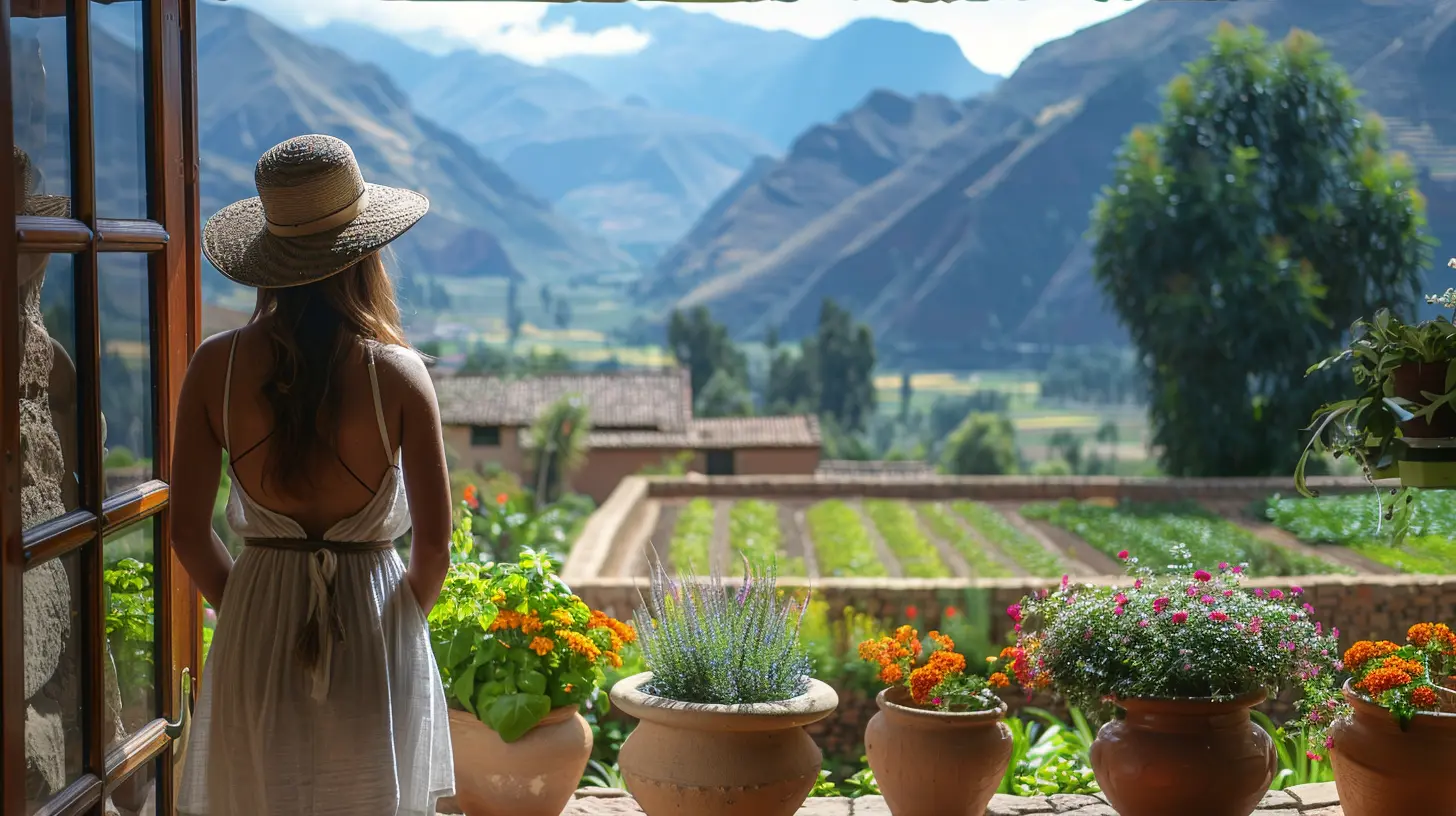
The Sacred Valley: A Culinary Gem
Situated at high altitudes with fertile soil, the Sacred Valley produces some of the freshest and most unique ingredients in Peru. The region’s diverse climate zones foster an incredible variety of crops, from giant corn and over 3,000 types of potatoes to exotic Andean fruits. Traditional cooking techniques, such as pachamanca (earth oven cooking), combined with indigenous Quechua flavors, make every meal here an experience.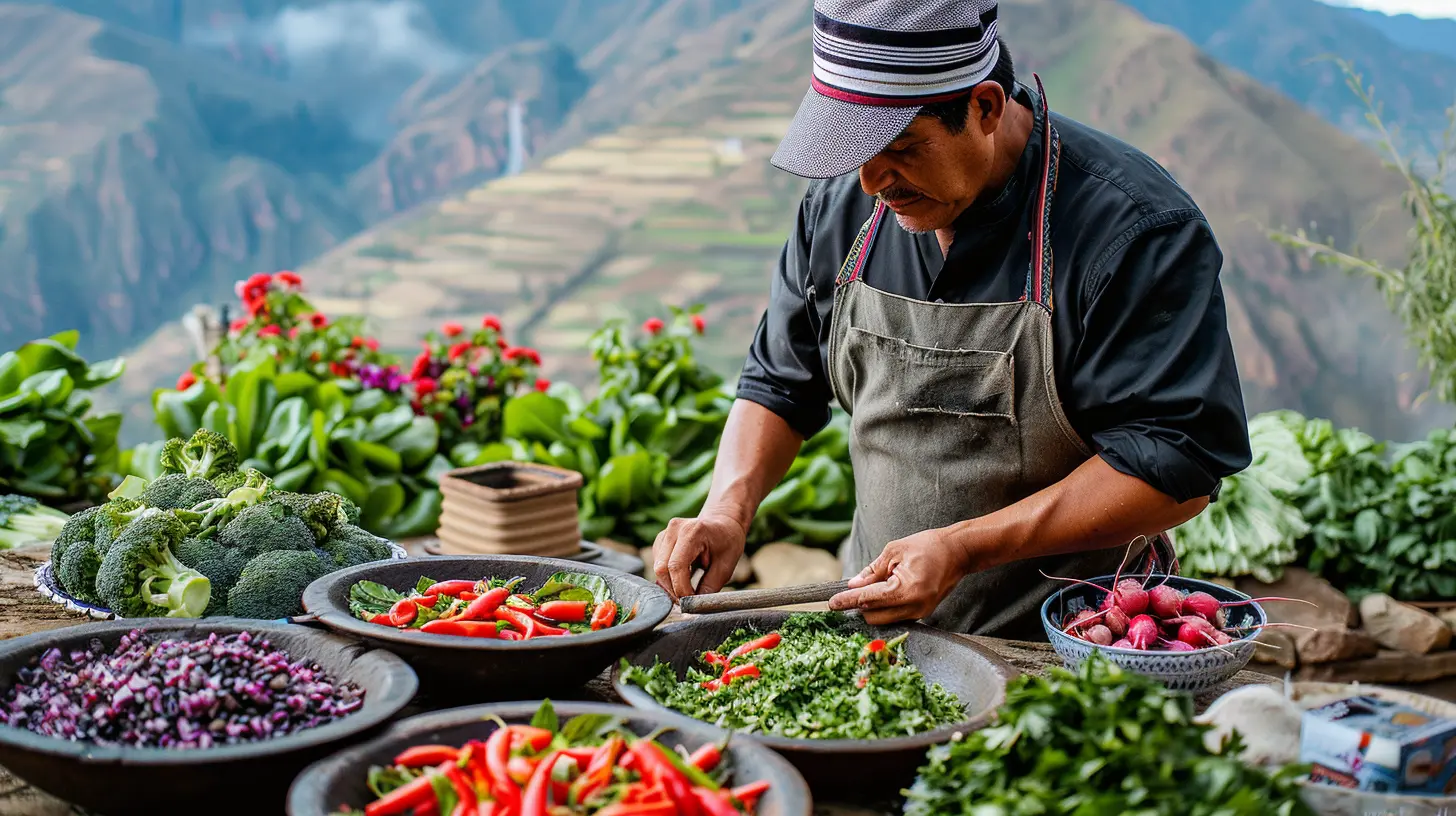
Must-Try Traditional Dishes
When it comes to Peruvian cuisine, the Sacred Valley offers some unique specialties you won’t find anywhere else. Here are some must-try dishes:1. Pachamanca: The Ancient Earth Oven Feast
Pachamanca is not just a dish—it’s a ritual. Traditionally prepared for communal gatherings, this meal involves burying marinated meats (often lamb, pork, or chicken) and vegetables beneath hot stones in the ground. The slow cooking process infuses the food with smoky, earthy flavors, making for an unforgettable experience.2. Chiri Uchu: A Plate of Bold Flavors
Chiri Uchu is a cold dish that brings together various Peruvian ingredients, including guinea pig, seaweed, cheese, roasted corn, and cold meats. With its bold and contrasting flavors, this dish is a true taste of Andean culinary heritage.3. Cuy al Horno: The Iconic Roasted Guinea Pig
In Peru, guinea pig (or cuy) is a delicacy, and the Sacred Valley serves some of the best. Roasted to crispy perfection and often served whole, cuy is a must-try for adventurous eaters. While it may seem unusual to some, it has been a staple in Andean diets for centuries.4. Trucha Frita: Fresh Fried Trout
Caught fresh from the Urubamba River, trucha frita (fried trout) is a simple yet delicious dish. Served with rice, potatoes, and a side of salsa criolla (onion and tomato salad), it’s a local favorite that showcases the valley's fresh produce.5. Olluquito con Charqui: An Hearty Andean Staple
This dish combines olluco (a native tuber resembling a small potato) with charqui (dried and salted alpaca meat). The result is a delicious, slightly tangy stew with a chewy texture—one that’s both satisfying and deeply rooted in Andean tradition.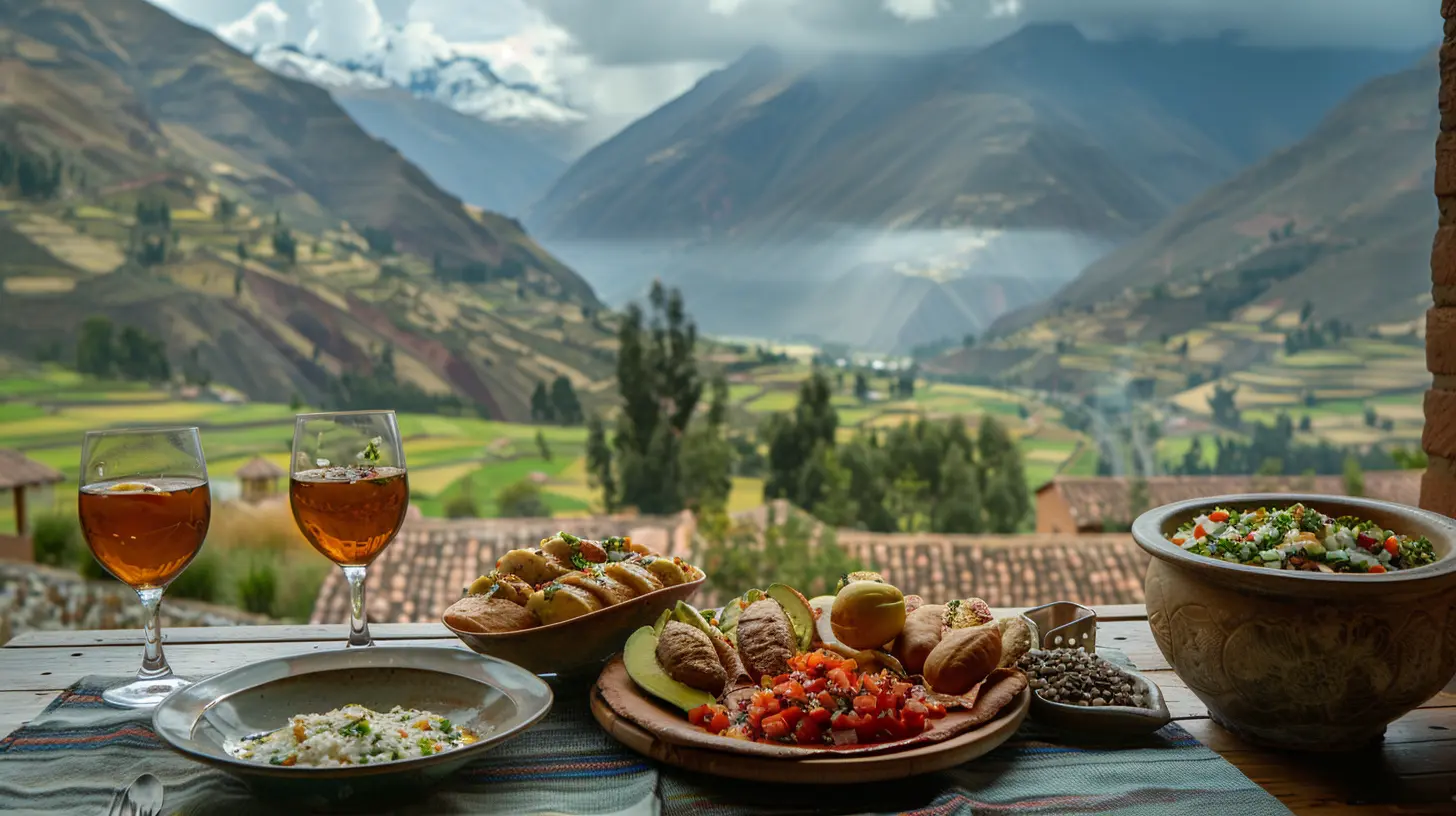
Unique Ingredients of the Sacred Valley
1. Giant White Corn (Choclo)
Peru’s Sacred Valley is famous for its huge, starchy corn kernels. You'll often find them served as a snack, boiled and paired with cheese, or as a side dish in many meals.2. Quinoa: The Superfood Grain
Long before it became a global health food trend, quinoa was a staple in the Andean diet. Rich in protein and nutrients, locals have been using it in soups, stews, and even drinks for centuries.3. Muña: The Andean Mint
Looking for a way to settle your stomach after indulging in Peruvian delights? Muña, a native Andean herb, is widely used for herbal teas that aid digestion and altitude sickness.4. Aguaymanto: The Golden Berry
This small, sweet-yet-tart fruit is packed with Vitamin C and antioxidants. It's often eaten fresh, blended into juices, or used in desserts.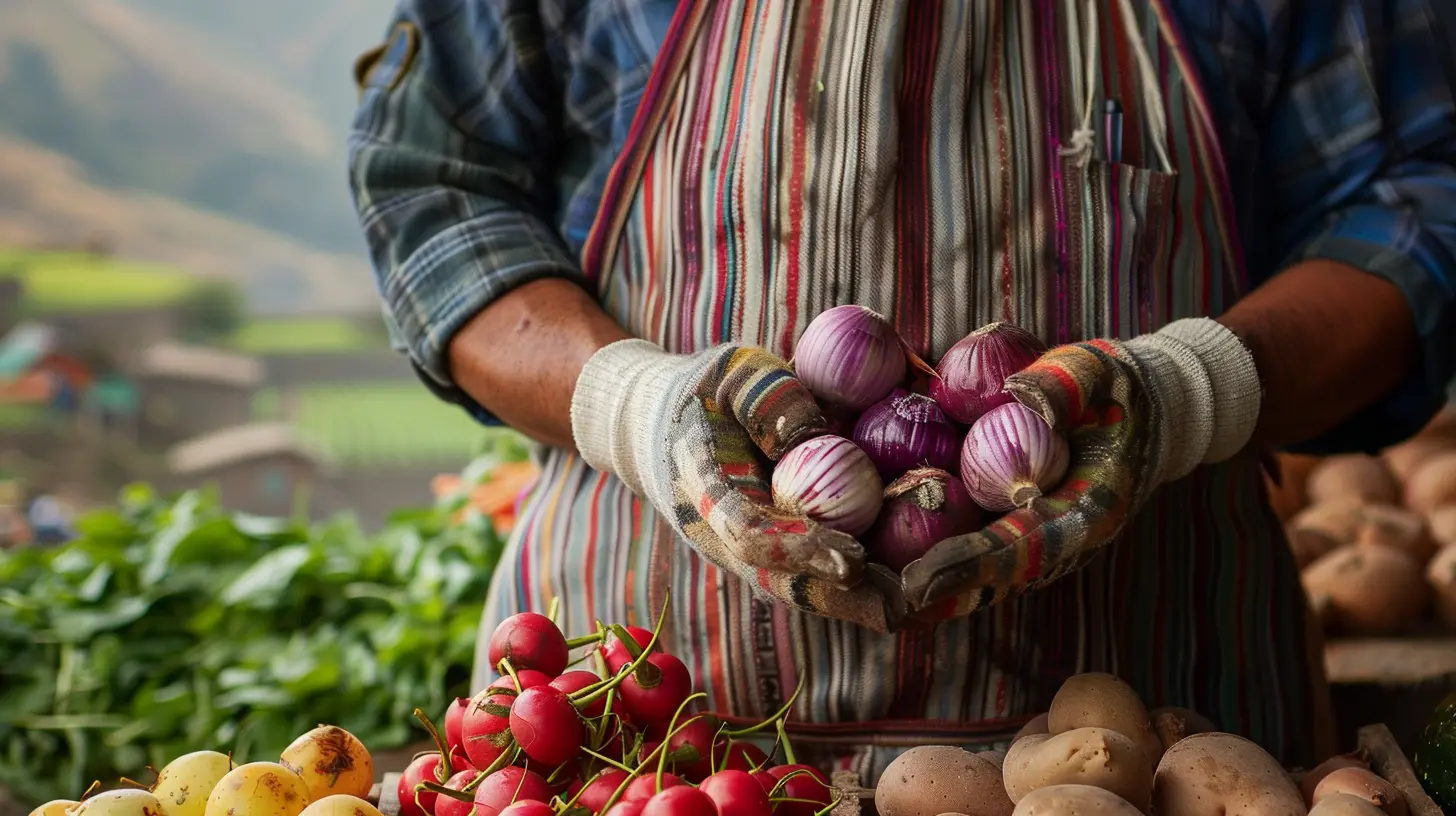
Best Culinary Experiences in the Sacred Valley
1. Visiting Local Markets
One of the best ways to immerse yourself in the region’s food culture is by visiting local markets. The Pisac Market and Urubamba Market are fantastic places to sample fresh produce, traditional snacks, and homemade cheeses.2. Farm-to-Table Dining
The Sacred Valley is home to some incredible farm-to-table restaurants. Places like Mil by Virgilio Martínez (one of Latin America’s top chefs) offer multi-course tasting menus featuring locally sourced ingredients. If you're looking for an authentic experience, try El Huacatay in Urubamba, where Andean flavors meet modern culinary techniques.3. Cooking Classes with Locals
Why just eat Peruvian food when you can learn to cook it? Many local chefs and families offer cooking classes where you’ll get hands-on experience preparing dishes like lomo saltado, fresh ceviche, or even pachamanca.4. Chicherías: Traditional Corn Beer Houses
Chicha is a fermented corn drink enjoyed throughout the Andes. To experience this ancient beverage, visit a traditional chichería, often marked with a red flag hanging outside. You'll get a taste of homemade chicha while learning about its cultural significance.The Role of Food in Andean Culture
Food in the Sacred Valley is more than just nourishment—it’s a connection to history, community, and Pachamama (Mother Earth). Many traditional meals are prepared as an offering to the earth, reflecting a deep respect for nature. Whether it’s the communal preparation of pachamanca or the careful harvesting of native crops, food here carries centuries of wisdom and tradition.
Best Time to Take a Culinary Tour in the Sacred Valley
While you can visit the Sacred Valley year-round, the best time for a culinary tour is between April and October when the weather is dry and sunny. This allows for better access to outdoor markets, farm visits, and even traditional outdoor cooking experiences.Final Thoughts
Embarking on a culinary tour of the Sacred Valley is more than just a food journey—it’s a deep dive into Peru’s rich history, indigenous traditions, and sustainable farming practices. From ancient cooking techniques to modern gastronomic innovations, the flavors of this region will leave a lasting impression on your taste buds.So, if you’re planning a trip to Peru, don’t just rush to Machu Picchu. Take time to savor the Sacred Valley’s unique flavors—you won’t regret it!
all images in this post were generated using AI tools
Category:
Foodie TravelAuthor:

Taylor McDowell
Discussion
rate this article
1 comments
Cooper McGovern
Exploring Peru's Sacred Valley through its culinary offerings is an unforgettable experience. From traditional dishes like ceviche and cuy to vibrant local markets, each bite immerses you in the region's rich culture and history.
October 11, 2025 at 4:31 AM

Taylor McDowell
Absolutely! Peru's Sacred Valley offers a unique culinary journey that beautifully showcases its rich culture and history through each delicious dish.

